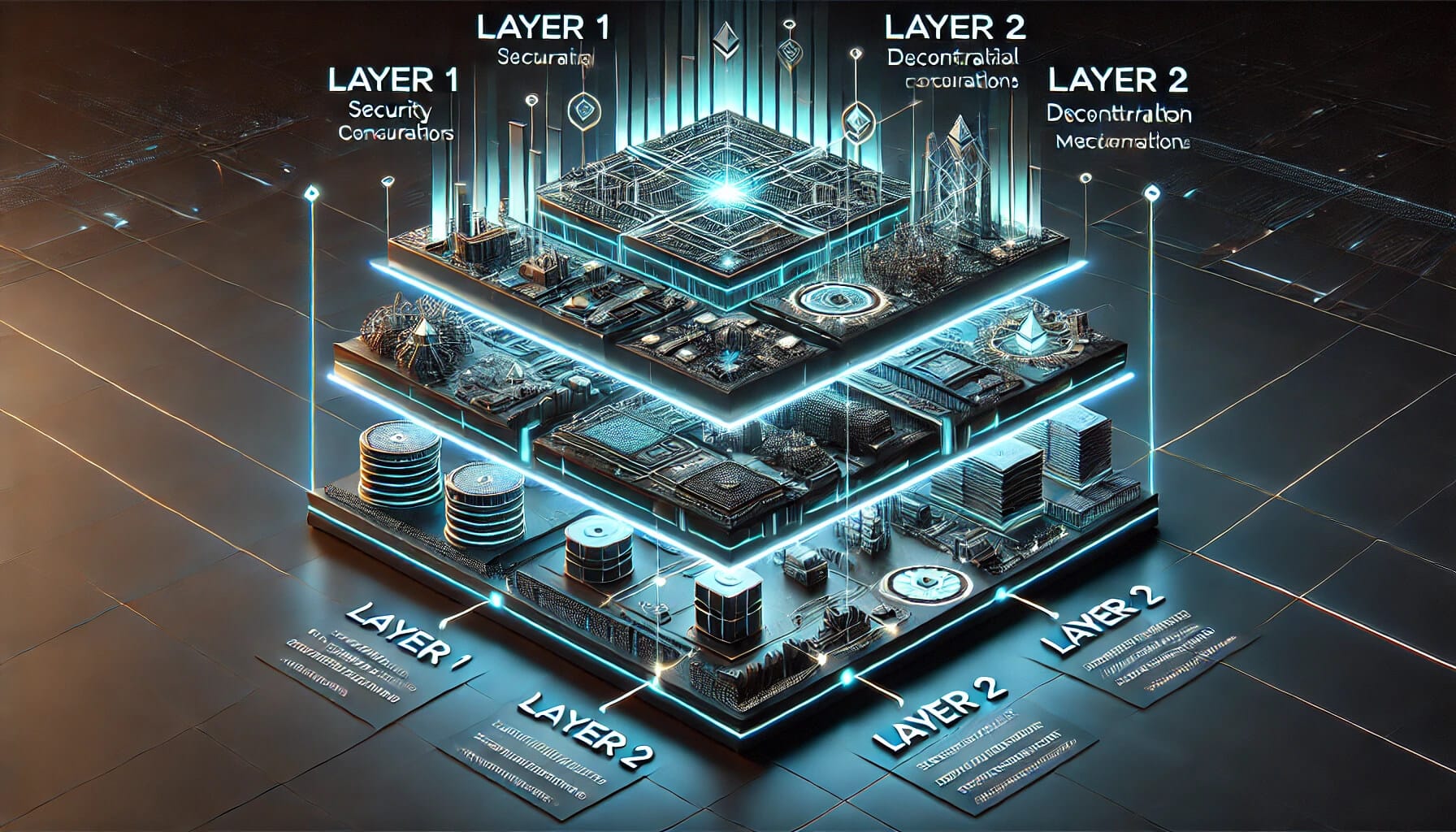1. Understanding the Scalability Challenge in Blockchain
Blockchain technology, with its decentralized and secure nature, has revolutionized numerous industries. It has transformed areas from finance to supply chain management. However, as blockchain adoption grows, so do its scalability challenges. Scalability refers to a blockchain network’s ability to handle an increasing number of transactions without compromising on speed, security, or decentralization. As the demand on the network increases, effective scalability solutions become more critical.
2. Layer 1 Solutions: Enhancing the Base Blockchain Protocol
Layer 1 solutions, also known as on-chain solutions, focus on improving the base layer of the blockchain itself. These solutions involve modifying the underlying protocol to increase the network’s capacity and efficiency.
2.1 Sharding
Sharding is one of the most promising Layer 1 scalability solutions. It involves splitting the blockchain into smaller, more manageable pieces called “shards.” Each shard contains its own data and can process transactions independently of the others. This parallel processing significantly increases the network’s transaction throughput.
- Ethereum 2.0 and Sharding: Ethereum, one of the most widely used blockchains, is implementing sharding as part of its Ethereum 2.0 upgrade. By dividing the blockchain into 64 shards, Ethereum aims to process transactions much faster and at a lower cost.
2.2 Consensus Mechanism Improvements
Traditional blockchains like Bitcoin use Proof of Work (PoW) as their consensus mechanism. PoW is energy-intensive and slow. Newer consensus algorithms, such as Proof of Stake (PoS) and its variations (e.g., Delegated Proof of Stake, Proof of Authority), are designed to be more efficient and scalable.
- Proof of Stake (PoS): PoS reduces the computational power required to validate transactions. Validators stake their tokens as collateral. This not only speeds up transaction processing but also reduces the environmental impact.
2.3 Block Size Increase
Another approach to enhancing scalability at the Layer 1 level is to increase the block size. This allows more transactions to be processed in each block. However, this solution has its trade-offs. Larger blocks require more resources to process, which can lead to centralization risks.
3. Layer 2 Solutions: Off-Chain Scaling Approaches
While Layer 1 solutions focus on the blockchain’s base protocol, Layer 2 solutions involve building protocols on top of the existing blockchain to handle transactions off-chain. This reduces the load on the main blockchain, enhancing overall scalability without altering the base layer.
3.1 State Channels
State channels are a popular Layer 2 solution that allows transactions to occur off-chain while still benefiting from the security of the underlying blockchain. A state channel is essentially a private channel where multiple transactions can be conducted between two parties. Once the series of transactions is complete, the final state is recorded on the blockchain.
- Lightning Network: The Lightning Network is a well-known implementation of state channels for Bitcoin. It enables fast and cheap transactions by allowing users to conduct off-chain transactions. These transactions are only recorded on the blockchain when the channel is closed.
3.2 Sidechains
Sidechains are separate blockchains that run in parallel to the main chain. They are connected to the main blockchain but operate independently. This allows for more flexibility in transaction processing. Sidechains can have their own consensus mechanisms and can be optimized for specific tasks, such as faster transaction processing or privacy.
- Plasma and Polygon (formerly Matic): Plasma is an Ethereum scaling solution that uses sidechains to offload transactions from the main Ethereum blockchain. Polygon, which evolved from the Plasma framework, offers a platform for building and connecting multiple sidechains, providing scalability and interoperability for Ethereum.
3.3 Rollups
Rollups are another Layer 2 solution that involves bundling multiple transactions into a single transaction. This bundled transaction is then recorded on the main blockchain. There are two main types of rollups: Optimistic Rollups and ZK-Rollups (Zero-Knowledge Rollups).
- Optimistic Rollups: Optimistic rollups assume transactions are valid and only verify them if there’s a challenge. This reduces the computational load on the main chain.
- ZK-Rollups: ZK-Rollups use zero-knowledge proofs to validate transactions off-chain before bundling them on-chain. This offers high scalability with robust security.
4. Hybrid Solutions: Combining Layer 1 and Layer 2 Approaches
To tackle the scalability challenge comprehensively, some blockchain projects are combining Layer 1 and Layer 2 solutions. This hybrid approach leverages the strengths of both layers.
4.1 Polkadot and Parachains
Polkadot is a multi-chain network that allows different blockchains (called parachains) to operate in parallel. These parachains are connected to a central relay chain. This setup enables scalability through parallel processing while maintaining security and interoperability.
- Parachains: Each parachain in the Polkadot network can have its own unique features and consensus mechanisms. This allows for a diverse ecosystem of scalable blockchains.
4.2 Cosmos and the Inter-Blockchain Communication Protocol (IBC)
Cosmos takes a similar approach by enabling different blockchains to interoperate through the Inter-Blockchain Communication (IBC) protocol. Cosmos focuses on creating a network of blockchains that can scale horizontally by adding more chains to the ecosystem.
5. The Future of Scalability Solutions in Blockchain
As blockchain technology continues to evolve, scalability will remain a critical focus. The ongoing development of both Layer 1 and Layer 2 solutions, along with hybrid approaches, promises to create more robust and efficient blockchain networks. These networks will be capable of supporting global-scale applications.
Conclusion
Scalability Solutions in Blockchain: Navigating the Future
The scalability of blockchain technology is essential for its continued growth and adoption. From Layer 1 innovations like sharding and improved consensus mechanisms to Layer 2 solutions like state channels and rollups, the future of blockchain scalability looks promising. As these solutions are implemented and refined, we can expect blockchain networks to handle a much larger volume of transactions. This will make decentralized applications more accessible and efficient.
For more insights and detailed guides on blockchain applications, visit our Blockchain Technology Guides.
Stay Updated
For the latest updates on blockchain scalability solutions and other innovations, follow us on:
Stay informed with the latest strategies and insights in the world of blockchain technology at FreeCoins24.io.
Special Offer
Ready to invest in the future of blockchain technology? Sign up on Bybit today and take advantage of up to $30,000 in deposit bonuses. Don’t miss out on the opportunity to trade scalable blockchain projects on a leading platform.

















